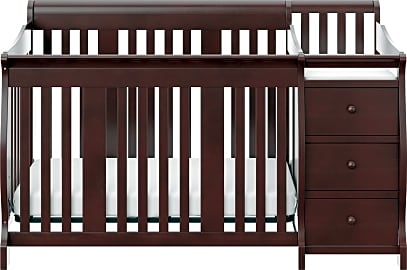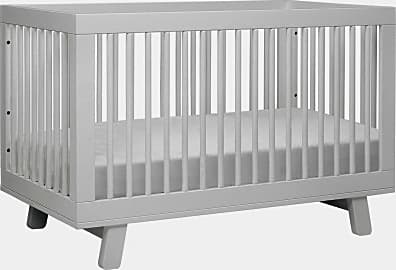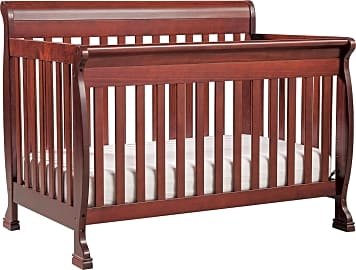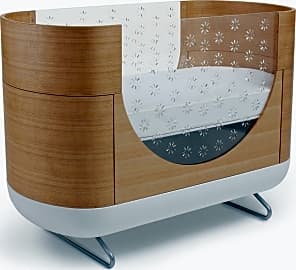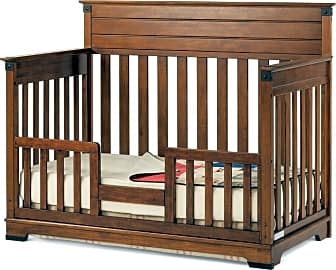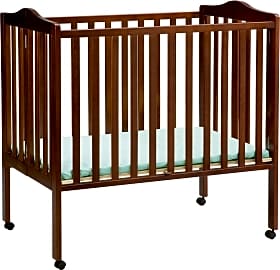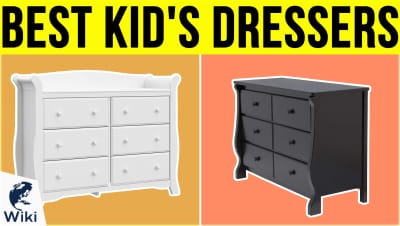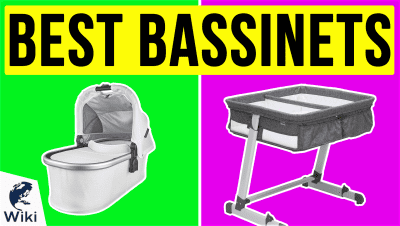The 10 Best Cribs

This wiki has been updated 38 times since it was first published in May of 2015. Few investments in the life of your child will get as much use as a crib. If you snatch up one of the models we've selected, you can look forward to a piece of furniture that may survive multiple kids, or convert to accommodate your little one all the way through to their teenage years. We've chosen a wide variety of designs to suit all tastes and they come in at prices to meet all budgets. When users buy our independently chosen editorial recommendations, we may earn commissions to help fund the Wiki.
Editor's Notes
June 18, 2020:
Safety is paramount when selecting anything for your child. That's one of the reasons that we sent off the Dream On Me Liberty, as there were some occasions when the paint could chip off, and while nontoxic, it's not the kind of thing you want anywhere near your baby.
But safety extends to more than just material quality. Mattress height is another big factor, as a parent with short arms might have a hard time reaching down into a particularly low-set crib like the DaVinci Kalani Convertible 4-In-1. It's also important in this sense to pay attention to how many height settings a given crib offers, as what might seem like too low an option could have several adjustment points, like the DaVinci Jenny Lind 3-In-1, which boasts four. The Pod 2-In-1 Convertible, conversely, despite being one of the coolest looking options out there, only has two of those settings, and given the fact that leaning over those acrylic edges might be rather uncomfortable, it's worth considering its height with respect to yours (or your partner's).
Depending on the design plan for your nursery, you might also want to consider models that are part of complete furniture sets, like that DaVinci Kalani or the mid-century-inspired Babyletto Hudson 3-In-1. You should also be on the lookout for storage options, with something like the Stork Craft Portofino offering built-in drawers and shelves, in addition to an attached changing surface.
Special Honors
Million Dollar Baby Winston Convertible This is a 4-in-1 option inspired by vintage metal models, and it's designed to convert all the way up to a full size bed for when your child reaches adolescence. Its powder-coated steel is corrosion-resistant, and is available in four attractive colors. Also, you can set the mattress to one of four different heights to ensure comfort for both you and your baby. milliondollarbaby.com
AFK Furniture This company offers an array of elegant designs that are augmented by hand-painted scenes on the sides. They're rendered in a pleasant, storybook style with soft colors and friendly faces, and you can choose from things like hot-air balloons, circus scenes, or fairy tales. Their actual construction is very fine, but as each one is made to order, it can take up to four months to arrive. afkfurniture.com
Bringing Up Baby
Other materials include metal frames or injected plastic molds.
Bringing new life into the world is a big job with a lot of responsibility. As prepared as any new parent is, the need for eventual help and support is inevitable. Keeping that in mind, there's no reason to let that responsibility overpower the fun of preparing for the arrival of a little one. Decking out your nursery with all that pure baby goodness keeps you ahead of the game as an expectant parent, while ensuring your child has a secure place to sleep. One of the staple items for a nursery is a safe, sturdy, and comfortable crib.
Also referred to as an infant bed and designed for babies between zero and two-to-three years of age, the crib is a young child's bedstead with high-reaching, slatted sides and an adjustable mattress support on which a baby sleeps. Unlike its portable bassinet counterpart, which is typically basket-like in style, hooded, and designed to support a child for only the first several months after birth, the crib is much more of a stationary accessory that supports older, developing babies who are (or will be) capable of standing. The crib typically has a low center of gravity, with greater mass than the bassinet, and a wide base that provides extra support for large and growing babies. It's important to remember that as a baby grows and develops its motor skills within the confines of a crib, it will learn to roll, thereby transferring intertia with its movements. One of the major benefits of the crib is that it ensures additional security during these developmental stages, as it's less likely to tip over than the bassinet.
While several types of cribs are available, three of the most common include standard, convertible, and multifunctional varieties. The standard crib is equipped with tall, slatted sides, an adjustable mattress support, and a fairly low center of gravity. Most standard cribs are constructed from solid hardwoods, including pine and cherrywood among others. Other materials include metal frames or injected plastic molds.
Designed to grow along with a baby up until five years of age, the convertible crib often features removable sides and panels, allowing it to be used as a daybed, toddler bed, and even a twin-sized traditional bed when a child is old enough. Convertible cribs are often more cost-effective than standard cribs, simply because they act as long-term sleeping solutions.
In addition to looking like their standard and convertible counterparts, multipurpose cribs usually incorporate additional pieces of furniture into their designs, including drawers, built-in changing stations, and shelf storage. These additional features are typically smaller in size than it would normally be when purchased separately, saving additional floor space in one's nursery environment.
Choosing The Best Crib
The newest baby cribs will adhere to the latest safety standards. This means no hazardous drop-sides or lead-based paint.
While budget is an important consideration, keep in mind that the crib will be one of the more expensive essentials you'll need to invest in for a new baby.
While budget is an important consideration, keep in mind that the crib will be one of the more expensive essentials you'll need to invest in for a new baby. After all, it's where Junior will call home for the next several years, so regardless of what the cost is, your choice should definitely be sturdy, comfortable, and relatively easy to assemble. Additionally, if you want a child to grow with the crib, then definitely spring for a convertible option. Not only does this save on the cost of additional furniture, but it can also make the transition from a crib to a regular bed gradual and less traumatic for a child as he or she grows.
If you want to save space in the nursery while having quick access to diapers, clothes, and other items, then a multipurpose crib is an excellent choice, particularly one with drawers, storage shelves, and a place to change your little one.
When possible, opt for a crib constructed entirely from pure hardwood, as this will minimize the potential for chipping due to the use of cheap wood veneers. The last thing you want is wood chips in your baby's mouth! To that point, many cribs are equipped with teething rails, which can keep your baby safe from possible splinters as he explores his new surroundings, while also extending the life and durability of your investment. Finally, make sure to look for a good mattress to go along with your crib of choice.
A Brief History Of The Crib
The earliest form of the crib consisted of nothing more than a hollowed-out log cradle and pine rocker designed to lull babies to sleep. Iron beds were later developed in 17th-century Italy for the purpose of dealing with bed bug infestations, a design that was carried over to children's beds in the form of a rockable iron bassinet as early as 1620. Iron-constructed infant beds became popular during the 19th century, as they were thought to be more hygienic than wood material.
The idea behind this scenario was that fresh air would be good for a baby's health.
By the 1900s, elevated iron cribs came into style, as parents wanted to keep their children safe from the cold floor, but the lead-based paint wasn't the healthiest, particularly for babies with a love for chewing on their cribs.
Baby cages became a fad in the 1920s after Eleanor Roosevelt hung a chicken wire cage out of a window in which her child would nap. The idea behind this scenario was that fresh air would be good for a baby's health.
By the 1950s, contemporary crib designs began to appear, but the national safety standards now required of all cribs were not instituted until 2010. Today's cribs offer versatility and safety to keep young children comfortable, while affording parents the convenience of a cost-effective piece of furniture that can grow along with a baby, allowing them a gradual transition from infancy to adolescence.



